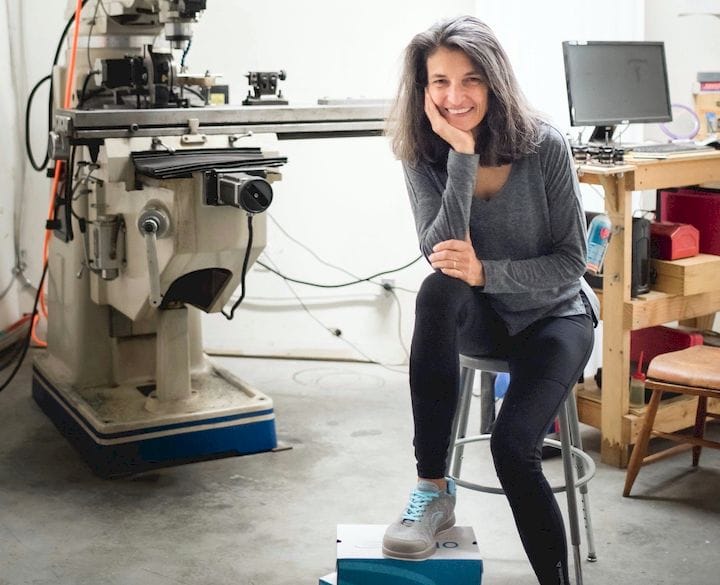![Casey Kerrigan [Source: Women in 3D Printing]](https://fabbaloo.com/wp-content/uploads/2020/05/image-asset_img_5eb0a3ca4889d.jpg)
Dr. Casey Kerrigan, a Harvard Medical School graduate, recognized internationally for her peer-reviewed published research on gait (walking and running) and the effects of footwear, left her perfectly good job at the University of Virginia (UVa), where she was the first woman tenured professor and chair of the department of physical medicine and rehabilitation (PM&R), professor of mechanical and aerospace engineering, and professor of sports medicine, to make OESH.
Casey is well known for dramatically changing the way we think about gait and footwear–ripping apart old, sometimes disastrous concepts and rigorously testing new ones–that have now become standards of normal understanding.
Casey is the one who first discovered a link between high-heeled shoes and knee osteoarthritis back in 1998 (which was widely publicized in numerous major news outlet including the New York Times, Time Magazine and ABC’s 20/20). And she is the one who published in 2009 that traditionally designed running shoes also increase knee joint torques. She received the highest honors and level of support from numerous national and international entities including the U.S. National Institutes of Health (NIH).
Throughout her career, the NIH repeatedly honored Casey’s work through its highly competitive peer-review process, with continuous funding for her research. Casey’s research, along with her years of clinical experience treating the wide variety of problems linked to poor footwear, led her to develop OESH. Additional motivation derives in part from Casey’s experience as a distance runner at the University of Chicago, where she set several school records in the early 1980’s and from her devotion to her three athletic daughters.
Nora Toure: Casey, what was your very first experience with 3D Printing?
Casey Kerrigan: I was injection molding our shoe soles with a uniquely springy material I developed based on my research and thought that perhaps we could 3D print it so as to speed up development and prototyping, and possibly even manufacture soles for mass customization. To print it, though, required building our own 3D printers since nothing yet existed to 3D print it.
Nora Toure: You are the founder of shoe company OESH. Can you tell us a bit more about the specificities of the shoes you are manufacturing?
Casey Kerrigan: First, unlike most other shoes, our shoe soles are completely flat without any heel elevation or side to side contours because I discovered that these features, typical to footwear, abnormally increase loads on the joints in the body. Second, unlike the typical foam cushion in shoe soles that I’ve also discovered increases loads on the joints in the body, our soles are comprised of a very springy material that effectively dampens all the body weight forces.
Read the rest at Women in 3D Printing











Elizabeth C. Engele (Lizzy) is a designer for social good, and a founder of MakerGirl.